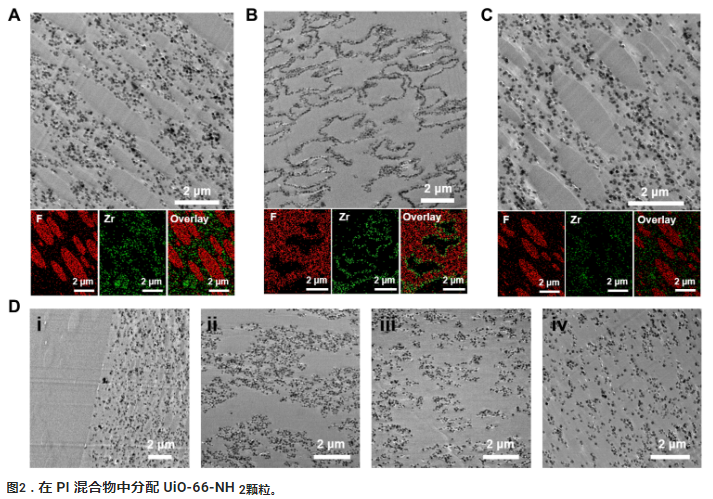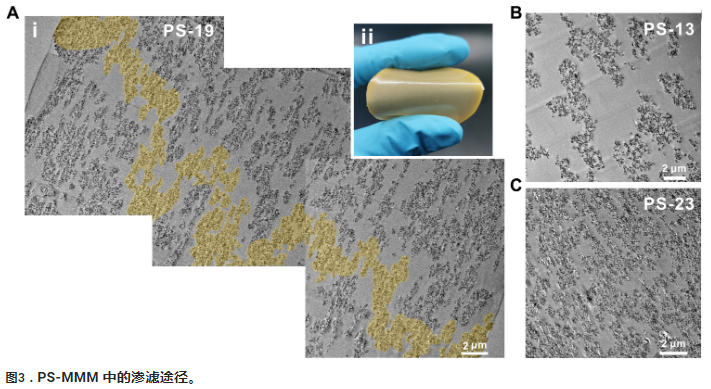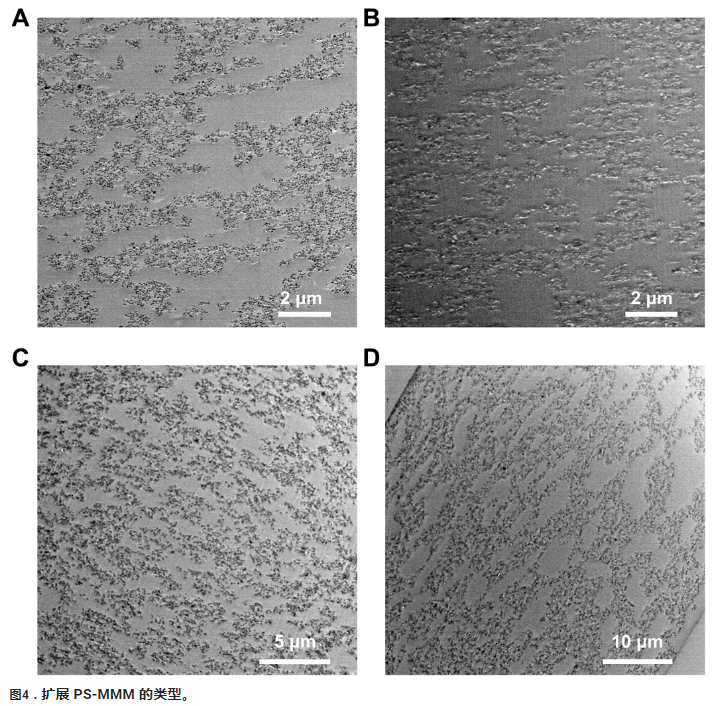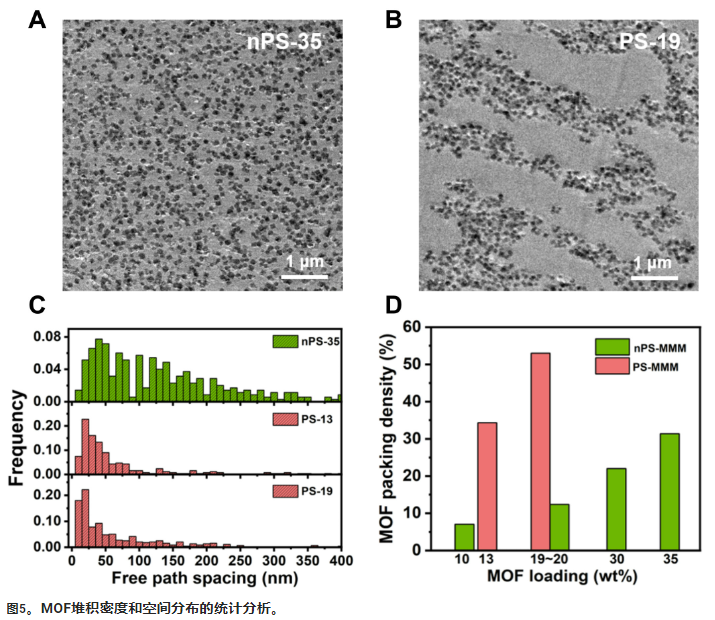Abstract
Achieving percolation pathways in a metal-organic framework (MOF)–based mixed matrix membrane (MMM) without compromising its mechanical properties is challenging. We developed phase separated (PS)–MMMs with an interconnected MOF domain running across the whole membrane. Through demixing two immiscible polyimides, the MOF particles were selectively partitioned into one of the preferred polymer domains at over 50 volume % local packing density, leading to a percolated network at only 19 weight % MOF loading. The CO2 permeability of this PS-MMM is 6.6 times that of the pure polymer membrane, while the CO2/N2 and CO2/CH4 selectivity remain largely unchanged. Meanwhile, benefiting from its unique co-continuous morphology, the PS-MMM also exhibited markedly improved membrane ductility compared to the conventional MMM at similar MOF loading. PS-MMMs offer a practical solution to simultaneously achieve high membrane permeability and good mechanical properties.






DISCUSSION
Conventional wisdom tells us that the aggregation of MOF particles in MMMs is considered an unwelcomed event. This is because such aggregation is typically driven by the incompatibility at the MOF-polymer interface, which will further lead to interfacial defect and compromised gas separation performance. However, in this work, we demonstrated that controlled aggregation of MOF particles driven by the demixing of a polyimide blend can not only preserve a compatible MOF-polymer interface but also give rise to a unique co-continuous morphology with both the polymer and the MOF domain showing good continuity throughout the whole membrane. Through fine-tuning of various parameters such as MOF loading, polymer ratio, polymer composition, solvent evaporation rate, etc., local MOF packing density can reach as high as 53% (v/v), while the mean interparticle spacing is centered around 20 nm. Along with the high continuity between MOF domains, these unique morphological features effectively reduce the polymer barrier thickness among MOF particles, thus drastically increasing the CO2 permeability of the MMM to 6.6 times that of the pure polymer membrane at only 19 wt% MOF loading. Moreover, benefiting from the continuous pure polymer phase presented in the membrane, the PS-MMM exhibited much higher ductility compared to conventional MMM at the same MOF loading. This feature is imperative for the deployment of MMMs in realistic application scenarios. Granted that PS-MMMs contain at least three components, the membrane morphology is influenced by numerous intertwined factors. Therefore, future efforts should be focused on fine tuning the membrane morphologies and understanding their structure-property relationship. We believe that this finding will open a new avenue in the rational design of MMMs for gas separation.








 Academic Frontier
Academic Frontier
 16898358042.png
16898358042.png